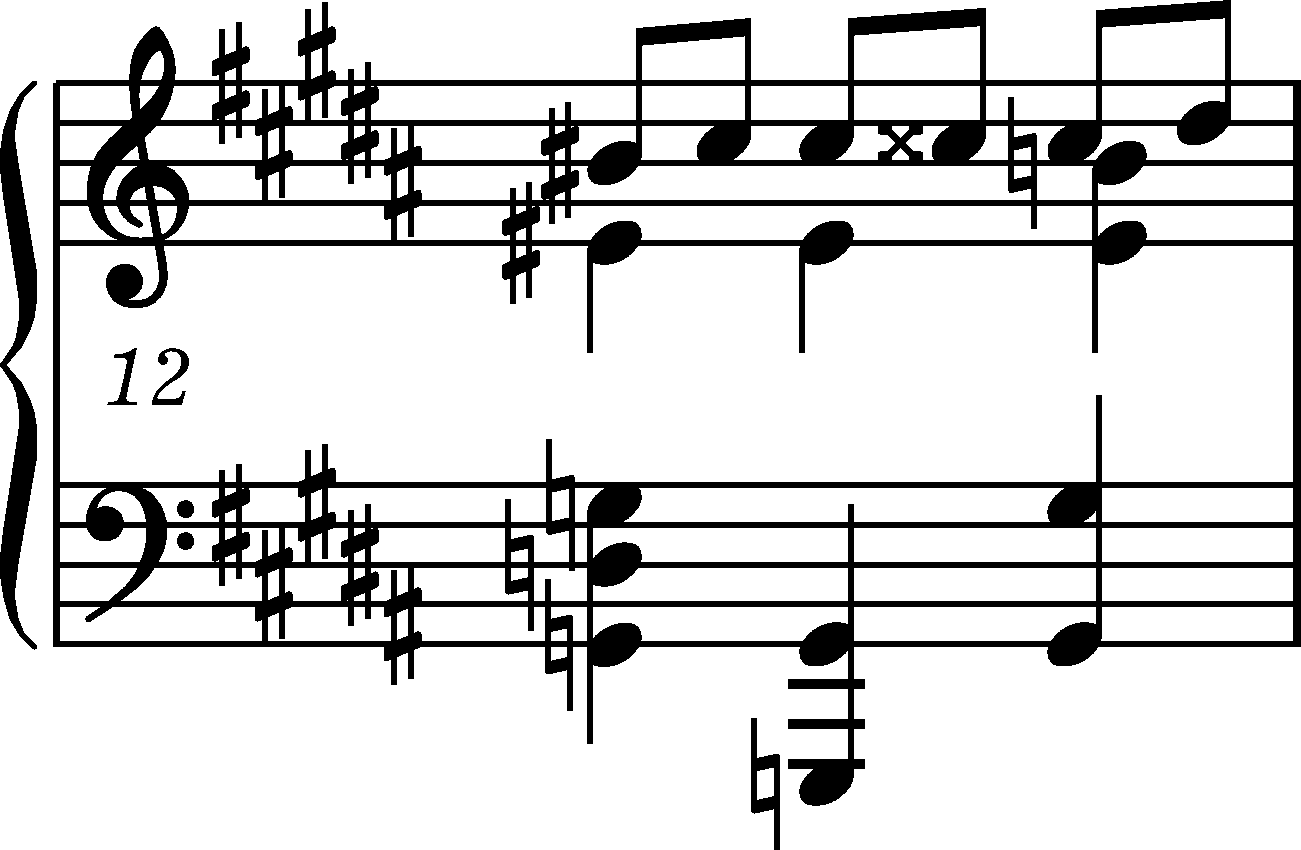



Issues : Omissions to cancel alteration
|
b. 3
|
composition: Op. 28 No. 12, Prelude in G♯ minor
..
In A (→FE,FC→GE) there is no category imprint: Differences between sources; Editorial revisions issues: EE revisions , Omissions to cancel alteration , Errors of A , Errors repeated in GE , Errors repeated in FE |
||||
|
b. 12
|
composition: Op. 28 No. 12, Prelude in G♯ minor
..
This bar was entirely crossed out in A and rewritten on adjacent staves – the R.H. above the crossing-out, while the L.H. – below. In the readable initial version, the regular steps of the R.H. quavers and the position of the 1st L.H. chord are preserved, while the f1 notes are written enharmonically as e category imprint: Corrections & alterations; Source & stylistic information issues: Omissions to cancel alteration , Corrections in A , Deletions in A , Accompaniment changes , Enharmonic corrections , Main-line changes |
||||
|
b. 30
|
composition: Op. 28 No. 12, Prelude in G♯ minor
..
There are no accidentals before the last octave in A (→FC,FE), which results in d
According to us, it is the latter that is much more likely, as it is suggested by the harmonic analogy in b. 29-30 and 31-32. category imprint: Interpretations within context; Differences between sources; Corrections & alterations; Source & stylistic information issues: EE revisions , Omissions to cancel alteration , GE revisions , Errors of A , Errors repeated in FE |

 restoring g
restoring g 1 on the 3rd crotchet in the bottom R.H. voice. The mistake was noticed only in
1 on the 3rd crotchet in the bottom R.H. voice. The mistake was noticed only in  . The corrections had been performed before the performance marks were introduced – the crossed-out version did not contain the following elements: accent, staccato dots, phrase mark, dashes marking the range of crescendo and pedalling marks. The
. The corrections had been performed before the performance marks were introduced – the crossed-out version did not contain the following elements: accent, staccato dots, phrase mark, dashes marking the range of crescendo and pedalling marks. The  restoring b1 on the 3rd beat of the bar was also missing.
restoring b1 on the 3rd beat of the bar was also missing.